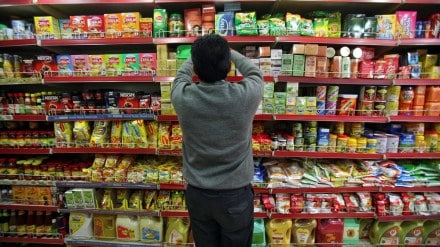Bridge packs of Rs 7 and Rs 15 per unit, which helped fast-moving consumer goods (FMCG) companies tackle inflationary pressures a year ago, are slowly leaving store shelves. This comes as the focus shifts to the Rs 10 price point, where the grammage offered is more, in view of moderating commodity inflation, top executives at FMCG companies said.“The Rs10 price point ensures there is no coinage issue at all. The price-value equation also works out well at Rs 10, which helps in maintaining margins. In other words, it is a viable option. And the third reason is that Rs10 can act as an effective competitor to local brands,” says Mayank Shah, senior category head, Parle Products, among the country’s leading biscuit makers.
Parle Products offers most of its biscuit brands at the Rs10 price point, weighing 75-80 gm in terms of pack size. Shah says Rs15 packs, which the company had launched earlier and weigh 110 gm have become unviable because consumers are unwilling to shell out an extra Rs 5 coin for a little more in terms of grammage. The company does not have a Rs7 price point, though it does have Rs 5 packs weighing about 40 gm per unit.Packaged foods major Nestle India, on the other hand, does have a Rs7 and Rs 14 pack each for Maggi noodles.
However, retailers and distributors that FE spoke to said availability of Rs 7 packs in recent months has been slow, though the Rs 14 packs, which weigh 84 gm, continue to be available in the market. The reduced push for Rs 7 packs also comes as Nestle has made a comeback in the Rs10 price point recently in instant noodles. The company is offering Rs 10 packs of Maggi noodles in Rurban markets —rural markets and small towns — across 15 states. Nestle’s Rs10 pack for Maggi, according to trade sources, weighs 40 gm, while its Rs7 packs weigh 32 gm. In response to Nestle, ITC launched YiPPee! Wow Masala Noodles, a new variant, at Rs10 last month. These packs weigh 50 gm.“The `7 packs were launched as a bridge between the Rs 5 and Rs10 price points. While inflationary pressures had forced companies to go in for odd pricing, the shift back to `5 and `10 in particular is intended to get consumers back to familiar price points,” says Sachin Bobade, vice-president, research at Mumbai-based brokerage Dolat Capital.
For local FMCG brands, Rs 5 is a popular price point; Kolkata-based Annapurna Swadisth, for instance, offers all its snacks, namkeens, biscuits, noodles and cakes at `5 per unit. But national brands have found the Rs 5 price point unviable , experts tracking the market said.According to Kantar Worldpanel data sourced from the industry, Rs 5 delivers FMCG volumes of around 32%, Rs 10 of around 22% and `20 of around 10%.While the share of `5 within FMCG is reducing — it was around 35% two years ago — Rs 10 is slated to grow and touch 25% in terms of FMCG volumes in the next couple of years.“Eventually, Rs 10 will become the `5 within FMCG. It is a sweet spot for companies and a price point that is viable for players,” says Tarun Arora, chief executive officer of Ahmedabad-based Zydus Wellness, the maker of the Complan brand of health food drinks.
